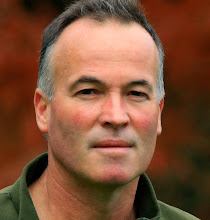Taupo District Council Press Release - 29 April 2010
Taupo gains ‘International Safe District’ accreditation with flying colours – WHO (World Health Organisation).
Six accredited examiners from the World Health Organisation (WHO) visited Taupo last Wednesday (21 April) to judge the district’s application to become an ‘International Safe District’, saying that the districts application was one of the best they had seen.
------------
Just as Taupo gets WHO accreditation for being a safe district, it's due to get another large scale 1080 drop directly into its water catchment, on its eastern side. This is due to begin anytime after the 21st MAY 2010, as was just printed in the Taupo Times. The extraordinary thing about this drop, like most aerial drops, is that it is to take place across an extensive area of pine forest. I was in one of the forests only a week ago, and there was no sign of possums in the part we were in. These forests have roads and tracks all through them, and are easy terrain to navigate on foot. So why aerial 1080???....because it's big money, and it's easy!
The last drop, on the southern side of the lake, was less than 12 months ago!!!
It's extraordinary that the World Health Organisation can award Taupo with such a "safe" status, while being oblivious to the environmental, civil, and WHO warning breaches that take place on a regular basis in the Taupo district, with regard to 1080 poison.
The same World Health Organisation that gave Taupo its big tick, includes the following about 1080 - (Mono Fluoroacetate) in its extensive warning page....
WHO (World Health Organisation) warnings for the use of compound 1080...
4.1.3 Sodium fluoroacetate should not be used in dwelling houses.
Baits should not be used where there is a risk of contaminating food,
animal feeding stuffs or drinking or washing water. Exposed baits
should be laid in containers clearly marked "Poison". Baits should not
be laid unless all access by children and animals other than rats and
mice can be prevented. Except in locked unoccupied premises baits
should not remain down for more than 24 hours. All exposed baits and
their containers should be removed after treatment and burned. Rodent
bodies should be searched for and destroyed by burning.
Note - In New Zealand, baits are dropped directly into waterways 3 metres, and less in diameter; at the same rate that's applied to land. (These small streams make up the bigger rivers) All baits are left to decompose where they fall - be that in the forest canopy, on the forest floor, or in the streams. All animals killed by 1080 are left to decompose where they die - be that on land, or in water.
4.2 ENTRY OF PERSONS INTO TREATED AREAS
The general public should be excluded from all access to premises
while baits are exposed.
Note - In New Zealand, all aerial drop zones remain open to the public while the aerial poison operations are conducted. There are NO warnings NOT to drink the water from the streams in these drop zones! In some smaller streams, that often have walking tracks cris-crossing them, contain high numbers of baits in the water.
5.1.2 Symptoms and signs: there is a variable latent period ranging
from 30 minutes to two hours between ingestion and appearance of
symptoms. The first indication of poisoning is nausea and mental
apprehension with facial twitching and numbness, generally followed by
epileptiform convulsions. After a period of several hours pulsus
alternans may exist followed by ventricular fibrillation and death.
Children appear to be more subject to cardiac arrest than to
ventricular fibrillation
Note - In New Zealand, 100's of thousands of animals and birds (and insects) are lethally, and sub-lethally poisoned every year - ranging from possums to dogs to deer to sheep to cattle, from robins to Kiwi to owls to parrots to hawks.
Ends.
Subscribe to:
Post Comments (Atom)







How disappointing. I would have thought that WHO would at least have made comment about the 1080 issue. I wonder if they even knew about it in relation to Taupo. It's especially ironic considering we constantly make reference to the World Health Organisation when we talk about 1080 poison being classified as one of the most dangerous toxins in the world. I also don't understand the use of 1080 in pine forest plantations. It's easy terrain, and why aren't the owners organising their own pest control? I thought that happened in most pine forests and that they successfully maintain low pest numbers through trapping. KK
ReplyDelete